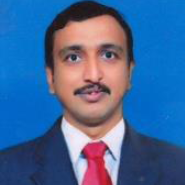
D. Basavesha
Work place: Shridevi Institute of Engineering and Technology, Karnataka 572106 India
E-mail: balakrishnanapp2020@gmail.com
Website: https://orcid.org//0009 0000 0388 4524
Research Interests:
Biography
Dr. Basavesha D. is presently working with the Department of CSE at Shridevi Institute of Engineering and Technology, Tumkur, Karnataka, India, in the capacity of Professor and Head of the Department. Dr. Basavesha D has received his PhD degree in Computer Science and Engineering from Visvesvaraya Technological University in the year 2022. He completed his postgraduate study (M.Tech) in NMAMIT, Nitte, and graduate study (BE) in Computer Science & Engineering from Sri Siddhartha Institute of Technology, Tumkur. His research interests are Big Data, Data Mining, Data Science, Machine Learning, Algorithms, DBMS, Network Security, and Cryptography. He has more than 15 years of teaching and research experience. He has published 15 international journals and 5 international conference papers in Scopus-indexed and WoS Q2 journals. He has two patents in his name (India and Australia). Dr. Basavesha D has participated in various faculty development programs and conducted value-added programs. He delivered more than 15 tech talks in various colleges and industries. He has guided more than 50 UG and 15 PG students for their academic projects. He also worked as coordinator for the NACC and NBA accreditation process.
Author Articles
DS-RAE: Advance Hybrid Double Residual Self-Attention and Recursive Autoencoder Approach for Dynamic Cloud Workload Forecasting
By G. M. Kiran A. Aparna Rajesh D. Basavesha
DOI: https://doi.org/10.5815/ijigsp.2025.05.04, Pub. Date: 8 Oct. 2025
Infrastructure as a service is used for resource management. Resources that will be available on demand are effectively managed using the resource management module. Predicting CPU and memory usage assists with resource management when cloud resources are provided. This study uses a hybrid DS-RAE model to forecast CPU and memory utilization in the future. Predictions are made using the range of values found, which is helpful for resource management. The memory and CPU use patterns in the cloud traces are identified by the Double Channel Residual Self-Attention Temporal Convolution Network (DSTNW) model as having linear components. The Recursive Autoencoder (RAE) model for tracing and enlarging nonlinear components and power consumption was developed using the DSTNW model. Gathers the raw data taken from the system's operational state, such as bandwidth, disk I/O time, disk space, CPU, and memory utilization. Discover patterns and oscillations in the workload trace by preprocessing the data to increase the prediction efficacy of this model. During data pre-processing, missing value edge computing and z-score normalization are used to select the important properties from raw data samples, eliminate irrelevant elements, and normalize them. After that, preprocessing utilizes a dynamization of the sliding window to improve the proposed model's accuracy on non-random workloads. Next, utilize a hybrid DS-RAE to attain accurate workload forecasting. Comparing the suggested methodology with existing models, experimental results show that it offers a better trade-off between training time and accuracy. The suggested method provides higher performance, with an execution time of 32 seconds and an accuracy rate of 97%. According to the simulation results, the DS-RAE workload prediction method performs better than other algorithms.
[...] Read more.Other Articles
Subscribe to receive issue release notifications and newsletters from MECS Press journals